Related Research Articles
Loyd C. Sigmon was born in Stigler, Oklahoma to a cattle-ranching family. He soon became interested in radio, earning his amateur ("ham") radio license at age 14. His broadcasting career began in 1932 at the Boston Short Wave and Television Laboratories. In 1941 he was hired as an engineer for MacMillan Petroleum Company's flagship radio station, KMPC, in Los Angeles, California. That job was interrupted by World War II; he served in the United States Army Signal Corps on General Dwight D. Eisenhower's staff.
State Route 91 (SR 91) is a major east–west state highway in the U.S. state of California that serves several regions of the Greater Los Angeles urban area. A freeway throughout its entire length, it officially runs from Vermont Avenue in Gardena, just west of the junction with the Harbor Freeway, east to Riverside at the junction with the Pomona and Moreno Valley freeways.
Route 710, consisting of the non-contiguous segments of State Route 710 (SR 710) and Interstate 710 (I-710), is a major north–south state highway and auxiliary Interstate Highway in the Los Angeles metropolitan area of the U.S. state of California. Also called the Los Angeles River Freeway prior to November 18, 1954, the highway was initially planned to connect Long Beach and Pasadena, but a gap in the route exists from Alhambra to Pasadena through South Pasadena due to community opposition to its construction.
Interstate 405 (I-405) is a major north–south auxiliary Interstate Highway in Southern California. The entire route is known as the northern segment of the San Diego Freeway. I-405 is a bypass auxiliary route of I-5, running along the southern and western parts of the Greater Los Angeles urban area from Irvine in the south to near San Fernando in the north.
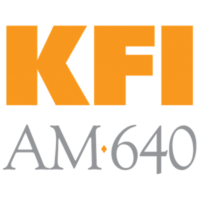
KFI is a radio station in Los Angeles, California, owned and operated by iHeartMedia, Inc. It began operations in 1922 and became one of the first high-powered, clear-channel Class A stations. It was the first U.S. station west of Chicago to broadcast at 50,000 watts.

The El Toro "Y" is a freeway interchange in southern Orange County, California where the Santa Ana Freeway, Interstate 5 (I-5), and the San Diego Freeway merge. South of the El Toro Y, the highway is named the "San Diego Freeway" with the highway designation "I-5." Located in south Orange County where the cities of Lake Forest, Laguna Hills, and Irvine converge, the interchange was named after the nearby city and the now-closed Marine Corps Air Station El Toro, located northeast of the interchange.

State Route 138 is an east–west state highway in the U.S. state of California that generally follows the northern foothills of the San Gabriel Mountains and the western Mojave Desert. The scenic highway begins in the west at its junction with Interstate 5 located south of Gorman in the Sierra Pelona Mountains, continues eastward through the Antelope Valley and Cajon Pass, to its junction with State Route 18 in the east, located in the San Bernardino Mountains south of Crestline.

KNX is a commercial radio station in Los Angeles, California. It airs an all-news radio format and is owned by Audacy, Inc. KNX is one of the oldest stations in the United States, having received its first broadcasting license, as KGC, in December 1921, in addition to tracing its history to the September 1920 operations of an earlier amateur station. The studios and offices—shared with KNX-FM, KCBS-FM, KROQ-FM, KRTH and KTWV—are located on Los Angeles' Miracle Mile.

The Southern California freeways are a vast network of interconnected freeways in the megaregion of Southern California, serving a population of 23 million people. The Master Plan of Metropolitan Los Angeles Freeways was adopted by the Regional Planning Commission in 1947 and construction began in the early 1950s. The plan hit opposition and funding limitations in the 1970s, and by 2004, only some 61% of the original planned network had been completed.
KABC is a commercial radio station licensed to Los Angeles, California, and serving the Greater Los Angeles area. The station is owned by Cumulus Media and broadcasts a talk radio format. The studios are located in the Los Angeles suburb of Culver City. The transmitter is off West Martin Luther King Boulevard in the Crenshaw District, shared with KWKW and KFOX. KABC is powered at 6,600 watts by day and 7,900 watts at night, using a directional antenna.

KSPN is a commercial radio station licensed to Los Angeles, California, and serving the Greater Los Angeles Area. Owned by Good Karma Brands, the station airs a sports format as the market's ESPN Radio affiliate. KSPN's studios are located at the ESPN Los Angeles Studios at L.A. Live in Downtown Los Angeles, while the transmitter resides in Irwindale. In addition to a standard analog transmission, KSPN is simulcast over former sister station KRDC and is available online; KSPN is also licensed to broadcast in the HD Radio (hybrid) format.

KRLA "AM 870 The Answer" is a commercial AM radio station broadcasting a talk radio format. Licensed to Glendale, California, it serves Greater Los Angeles and Southern California. The station is owned by Salem Media Group, which also owns 99.5 KKLA-FM which features a Christian talk and teaching format, and 95.9 KFSH-FM with a contemporary Christian music format. By day, KRLA transmits with 50,000 watts, the maximum for commercial AM stations. Since AM 870 is a clear channel frequency reserved for Class A WWL New Orleans, KRLA must reduce power to 3,000 watts to reduce interference. It uses a directional antenna with a three-tower array. The transmitter is off El Reposo Drive in Los Angeles, near the Glendale Freeway.
Sig used as a name may refer to:
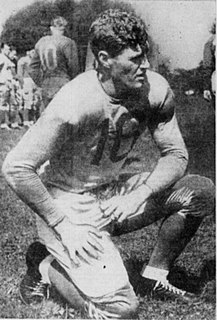
Robert O'Dell "Horse" Reynolds was an American football player and businessman in radio and professional sports. He was inducted into the College Football Hall of Fame and is the only player ever to play in every minute of three consecutive Rose Bowl games (1934–1936). Reynolds was an All-American tackle who played for Stanford from 1933 to 1935. After two years in the NFL, Reynolds went into the broadcasting business and became general manager of the 50,000-watt KMPC radio station. He formed a partnership with Gene Autry in 1952 and served as the president of Golden West Broadcasting. He was also a founder, co-owner and president of the California Angels Major League Baseball team from 1960–1975.

California's transportation system is complex and dynamic. Although known for its car culture and extensive network of freeways and roads, the state also has a vast array of rail, sea, and air transport. Several subway, light rail, and commuter rail networks are found in many of the state's largest population centers. In addition, with the state's location on the West Coast of the United States, several important ports in California handle freight shipments from the Pacific Rim and beyond. A number of airports are also spread out across the state, ranging from small general aviation airports to large international hubs like Los Angeles International Airport and San Francisco International Airport.
Doug Dunlap is a long-time traffic reporter in Los Angeles, California. Currently heard on KFWB, he has been reporting traffic for over twenty years on other Los Angeles stations such as KABC, KNX, KRTH, KMPC, KLAC and KZLA among others.
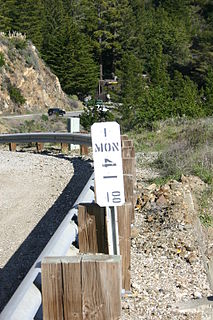
California uses a postmile highway location marker system on all of its state highways, including U.S. Routes and Interstate Highways. The postmile markers indicate the distance a route travels through individual counties, as opposed to milestones that indicate the distance traveled through a state. The postmile system is the only route reference system used by the California Department of Transportation (Caltrans).
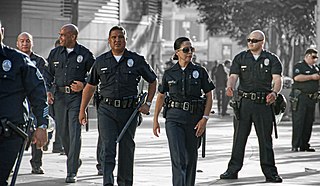
This is a list of resources of the Los Angeles Police Department (LAPD), including information on the department's divisions, vehicles, and technology.
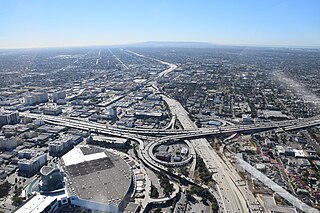
The Dosan Ahn Chang Ho Memorial Interchange, also known as the Harbor–Santa Monica Freeway Interchange, is a three-level cloverstack interchange that serves as the junction between the Harbor and Santa Monica Freeways at the southern edge of Downtown Los Angeles, California.
References
- ↑ "Sigalert.com - Frequently Asked Questions". Archived from the original on 2015-04-15. Retrieved 2017-04-19.
- 1 2 3 "Q. What are Sig-Alerts?". CalTrans FAQs. Retrieved 2017-04-19.
- 1 2 "CHP Traffic Incident Information Page" . Retrieved 2017-04-19.
- 1 2 "L.A.'s Patron Saint of Traffic" (PDF).
- ↑ Berman, Arthur (February 25, 1962). "Quick Sigalerts Save Lives, Spare Accidents". Los Angeles Times. p. F5. Retrieved July 14, 2022– via Newspapers.com.
- ↑ Purdum, Todd S. (1997-05-18). "How Los Angeles Traffic Snarls Spawned a Word". The New York Times. Retrieved 2017-04-19.
- ↑ O'Neil, Rob (1997-08-16). "Sigmon Put L.A. Drivers on the Alert". Los Angeles Times. Retrieved 2017-04-19.
- ↑ Rivenberg, Roy (June 4, 2004). "Radio Pioneer Created the Sig Alert". Los Angeles Times. pp. A1, A18. Retrieved July 14, 2022– via Newspapers.com.
- ↑ Carney, Steve (September 4, 2000). "He Labored to Help Us Out of That Jam". Los Angeles Times. p. E2. Retrieved July 14, 2022– via Newspapers.com.
